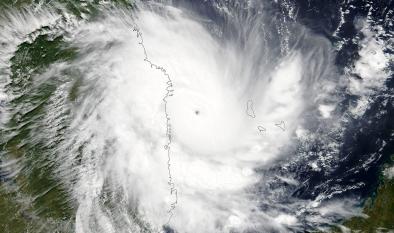Science Source
A review of tropical cyclone‐generated storm surges: Global data sources, observations, and impacts
- States that tropical cyclone‐generated storm surges are among the world's most deadly and destructive natural hazards
- Provides the first comprehensive global review of tropical storm surge data sources, observations, and impacts
- States that available literature has provided data for more than 700 surge events since 1880, the majority of which are found in the western North Atlantic (WNA), followed by Australia/Oceania, the western North Pacific (WNP), and the northern Indian Ocean (NIO)
- Finds that the Bay of Bengal (BOB) in the NIO consistently observes the world's highest surges, as this subbasin averages five surges ≥5 m per decade and has observed credible storm tide levels reaching 13.7 m
- Finds that the WNP observes the highest rate of low‐magnitude surges, as the coast of China averages 54 surges ≥1 m per decade, and rates are likely higher in the Philippines
- The U.S. Gulf Coast observes the second highest frequency of both high‐magnitude (≥5 m) and low‐magnitude (≥1 m) surges
- The BOB observes the most catastrophic surge impacts, as 59% of global tropical cyclones that have killed at least 5000 people occurred in this basin. The six deadliest cyclones in this region have each killed at least 140,000 people, and two events have killed 300,000.
- Storm surge impacts transportation, agriculture, and energy sectors in the WNA.
- Oceania experiences long‐term impacts, including contamination of fresh water and loss of food supplies, although the highest surges in this region are lower than most other basins.
Related Content
Headline

Apr 25, 2019 | Washington Post
Historic Tropical Cyclone Kenneth crashes ashore in northern Mozambique, where devastating flooding is feared
Science Source
| Nature
A global slowdown of tropical-cyclone translation speed
James P. Kossin
Science Source
| Nature Geoscience
Enhanced poleward propagation of storms under climate change
Talia Tamarin-Brodsky, Yohai Kaspi
Science Source
| Scientific Reports
Persistent northward North Atlantic tropical cyclone track migration over the past five centuries
Lisa M. Baldini, James U. L. Baldini, Jim N. McElwaine et al


